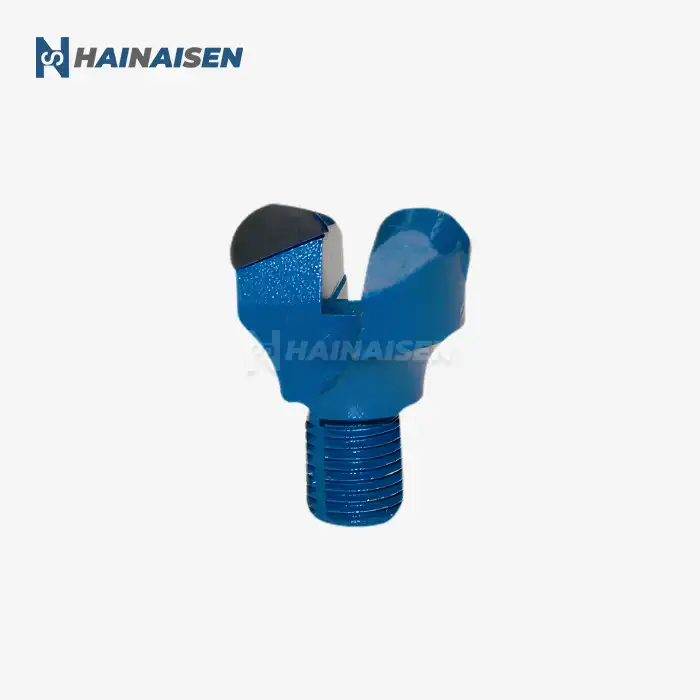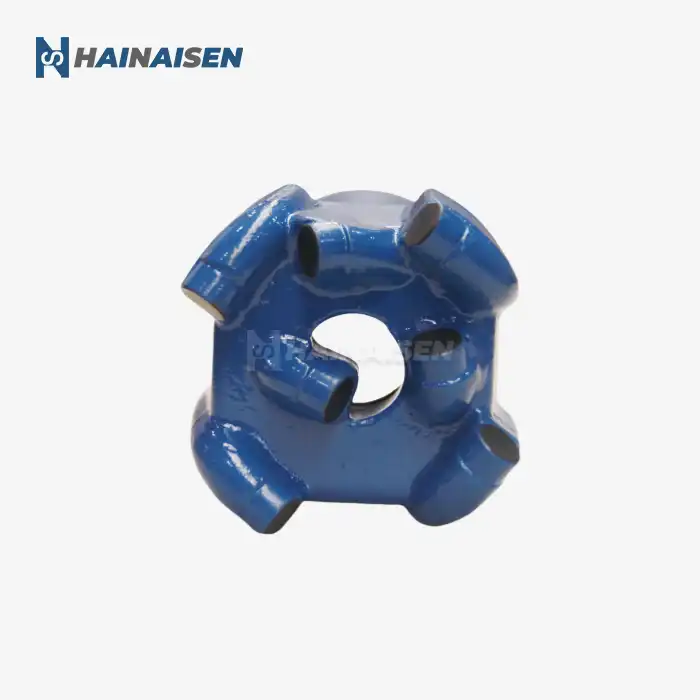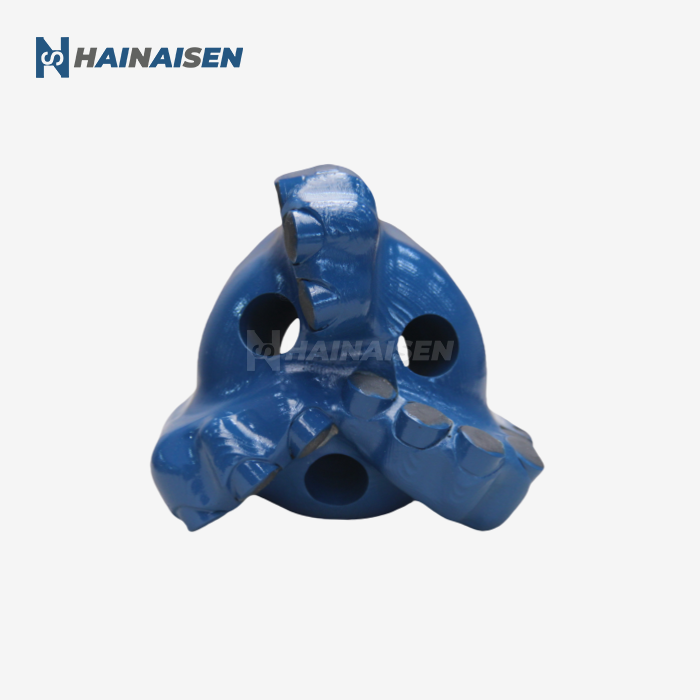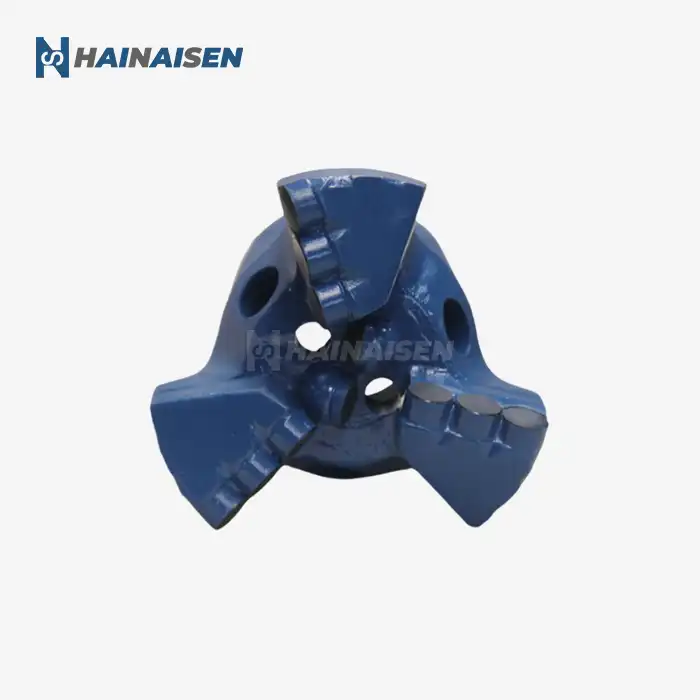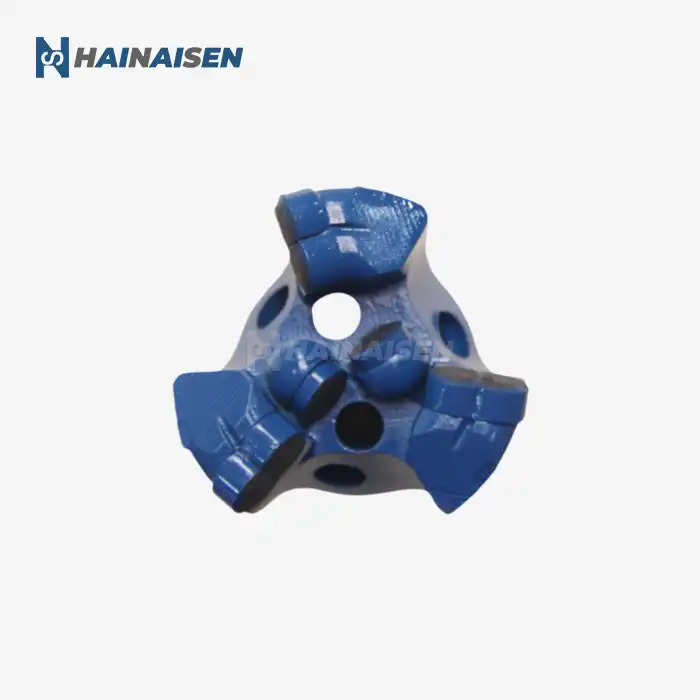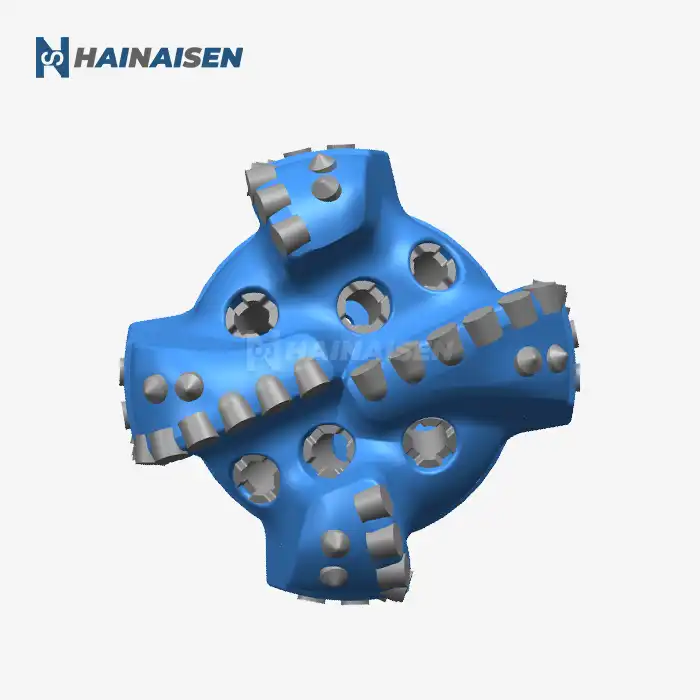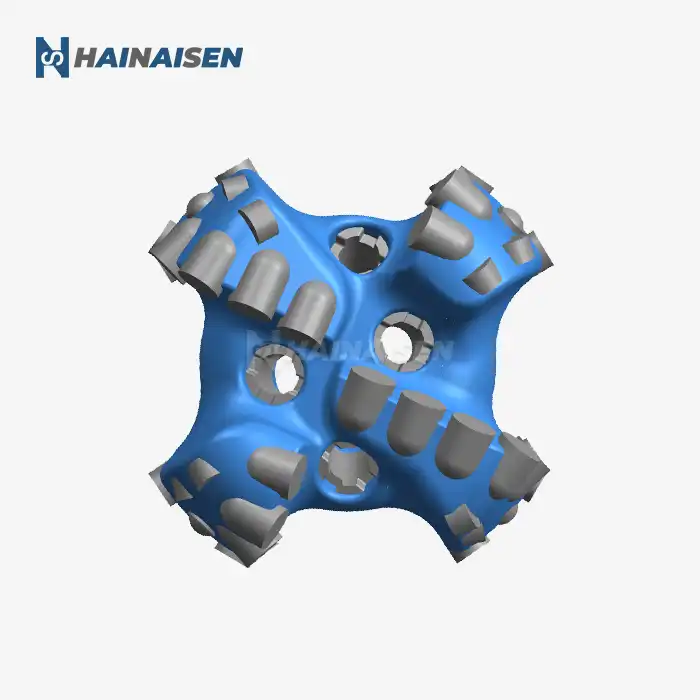Why PCD Hardness and Thermal Conductivity Reduce Abrasion?
The exceptional wear resistance of Polycrystalline Diamond Drill Bits stems from two key properties: extreme hardness and high thermal conductivity. These characteristics work synergistically to minimize abrasion and extend bit life.
Unmatched Hardness
PCD material boasts a hardness rating of 9-10 on the Mohs scale, rivaling that of natural diamond. This extraordinary hardness allows PCD cutters to maintain their sharp edges even when drilling through abrasive formations. As the bit rotates and encounters rock, the diamond particles resist deformation and breakage, preserving the cutting structure's integrity over extended periods.
Superior Thermal Management
The high thermal conductivity of PCD plays a crucial role in wear reduction. During drilling, friction generates significant heat at the cutter-rock interface. PCD's ability to rapidly dissipate this heat prevents localized thermal damage and maintains the material's structural integrity. This efficient heat transfer also helps prevent the formation of built-up edge (BUE) on the cutters, which can lead to accelerated wear and reduced drilling efficiency.
Synergistic Wear Resistance
The combination of extreme hardness and excellent thermal conductivity creates a synergistic effect that significantly enhances wear resistance. The hard diamond structure resists mechanical abrasion, while efficient heat dissipation prevents thermal degradation. This dual protection mechanism allows PCD bits to maintain their cutting efficiency and dimensional stability even in the most challenging drilling environments.
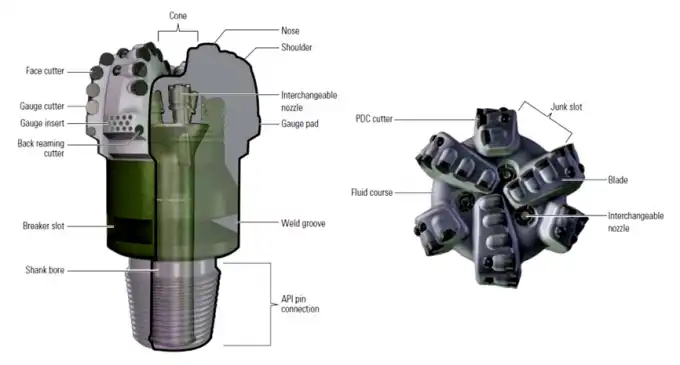
Matrix vs Steel Bodies: Erosion and Impact Trade-offs
When designing Polycrystalline Diamond Drill Bits, manufacturers must carefully consider the choice between matrix and steel bodies. Each option presents unique advantages and trade-offs in terms of erosion resistance and impact strength.
Matrix Body Advantages
Matrix-bodied PCD bits are composed of tungsten carbide particles infiltrated with a metallic binder. This construction offers superior erosion resistance, making it ideal for abrasive formations and high-velocity fluid environments. The matrix material's hardness helps protect the bit body from wear caused by circulating drilling fluids and cuttings. Additionally, matrix bodies allow for more complex cutter layouts and hydraulic designs, enabling optimized drilling performance in specific formations.
Steel Body Benefits
Steel-bodied PCD bits, on the other hand, excel in impact resistance and toughness. Their ability to withstand sudden shocks and vibrations makes them well-suited for directional drilling applications and formations with interbedded hard streaks. Steel bodies also offer greater flexibility in terms of cutter size and placement, allowing for more aggressive cutting structures when needed.
Balancing Act
Choosing between matrix and steel bodies involves careful consideration of the specific drilling application and formation characteristics. For instance, in highly abrasive environments where erosion is a primary concern, matrix bodies may be preferred. Conversely, in applications involving frequent directional changes or unstable formations, the impact resistance of steel bodies might be more advantageous. Some manufacturers have developed hybrid designs that combine elements of both matrix and steel construction to optimize performance across a broader range of drilling conditions.
Heat at the Wear Flat: Managing Thermal Softening
One of the critical challenges in maintaining the wear resistance of Polycrystalline Diamond Drill Bits is managing the heat generated at the wear flat – the area where the cutter contacts the rock formation. Excessive heat can lead to thermal softening of the PCD material, potentially compromising its cutting efficiency and accelerating wear.
Thermal Degradation Mechanisms
As PCD cutters engage with the rock, friction generates significant heat at the contact point. If this heat is not effectively dissipated, it can cause localized thermal degradation of the diamond structure. This degradation can manifest as graphitization of the diamond particles or weakening of the inter-particle bonds, both of which reduce the cutter's wear resistance and cutting ability.
Innovative Cooling Strategies
To combat thermal softening, bit designers employ various cooling strategies:
- Advanced hydraulics: Optimized nozzle placement and fluid dynamics help direct cooling mud flow to the cutters, efficiently removing heat from the wear flat.
- Thermal-stable PCD (TSP): Some manufacturers incorporate specially treated PCD materials with enhanced thermal stability, allowing them to withstand higher temperatures without degradation.
- Diamond-enhanced substrates: By incorporating diamond particles into the substrate material, some designs improve heat transfer away from the cutting edge.
- Cutter geometry optimization: Careful shaping of the cutter face and chamfer can help distribute heat more evenly and reduce localized hot spots.
Balancing Aggression and Thermal Management
Effective thermal management often requires a delicate balance between cutting aggressiveness and heat generation. While more aggressive cutting structures can improve drilling efficiency, they also tend to generate more heat. Bit designers must carefully optimize cutter placement, back rake angles, and hydraulic design to achieve the ideal balance between drilling performance and thermal stability.
Monitoring and Adaptive Drilling Practices
In addition to design considerations, proper drilling practices play a crucial role in managing heat at the wear flat. Real-time monitoring of drilling parameters such as weight on bit (WOB), rotary speed, and hydraulics allows operators to adjust their approach to minimize excessive heat generation. Some advanced drilling systems even incorporate adaptive algorithms that automatically optimize drilling parameters based on real-time data, helping to extend bit life and maintain optimal performance throughout the run.
The wear resistance of Polycrystalline Diamond Drill Bits is a complex interplay of material properties, design considerations, and operational practices. By leveraging the exceptional hardness and thermal conductivity of PCD, carefully balancing body material trade-offs, and implementing effective heat management strategies, manufacturers can produce bits that deliver superior performance and longevity in even the most challenging drilling environments. As technology continues to advance, we can expect further innovations in PCD bit design and materials, pushing the boundaries of what's possible in drilling efficiency and wear resistance.

Conclusion
The exceptional wear resistance of Polycrystalline Diamond Drill Bits has made them indispensable tools in the drilling industry. By understanding the intricate balance of material properties, design considerations, and operational practices that contribute to their performance, drilling professionals can make informed decisions to optimize their operations.
For oil and gas companies, coal mining operations, and water well drilling teams seeking to enhance their drilling efficiency and reduce overall costs, investing in high-quality PCD bits is a smart choice. Shaanxi Hainaisen Petroleum Technology Co., Ltd. offers a wide range of cutting-edge Polycrystalline Diamond Drill Bits designed to meet the specific needs of various drilling applications.
Our experienced R&D team, state-of-the-art manufacturing facilities, and commitment to quality ensure that our bits deliver superior performance and longevity in the field. Whether you're dealing with hard formations, abrasive environments, or challenging directional drilling projects, we have the expertise to provide tailored solutions that maximize your drilling efficiency.
Don't let inferior drill bits hold back your operations. Contact us today at hainaisen@hnsdrillbit.com to learn more about our Polycrystalline Diamond Drill Bits and how they can revolutionize your drilling performance. Our team of experts is ready to assist you in selecting the perfect bit for your specific needs and provide ongoing support to ensure optimal results.
References
1. Smith, J.R. et al. (2020). "Advanced Materials in Polycrystalline Diamond Drill Bit Design." Journal of Petroleum Technology, 72(5), 62-68.
2. Zhang, L. and Wang, H. (2019). "Thermal Management Strategies for PCD Drill Bits in High-Temperature Formations." International Journal of Rock Mechanics and Mining Sciences, 118, 102-110.
3. Anderson, M.E. (2021). "Comparative Analysis of Matrix and Steel-Bodied PCD Bits in Abrasive Formations." SPE Drilling & Completion, 36(2), 235-247.
4. Lee, S.K. et al. (2018). "Optimization of Cutter Geometry for Enhanced Wear Resistance in Polycrystalline Diamond Drill Bits." Wear, 402-403, 124-135.
5. Thompson, R.C. and Chen, D.C. (2022). "Real-Time Adaptive Drilling Parameters for PCD Bit Performance Optimization." SPE Annual Technical Conference and Exhibition, Houston, Texas, USA, October 3-5, 2022.
6. Patel, A. and Johnson, K.L. (2020). "Advancements in Polycrystalline Diamond Synthesis for Drill Bit Applications." Diamond and Related Materials, 109, 108011.



